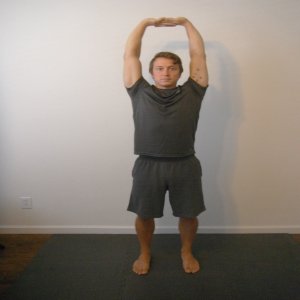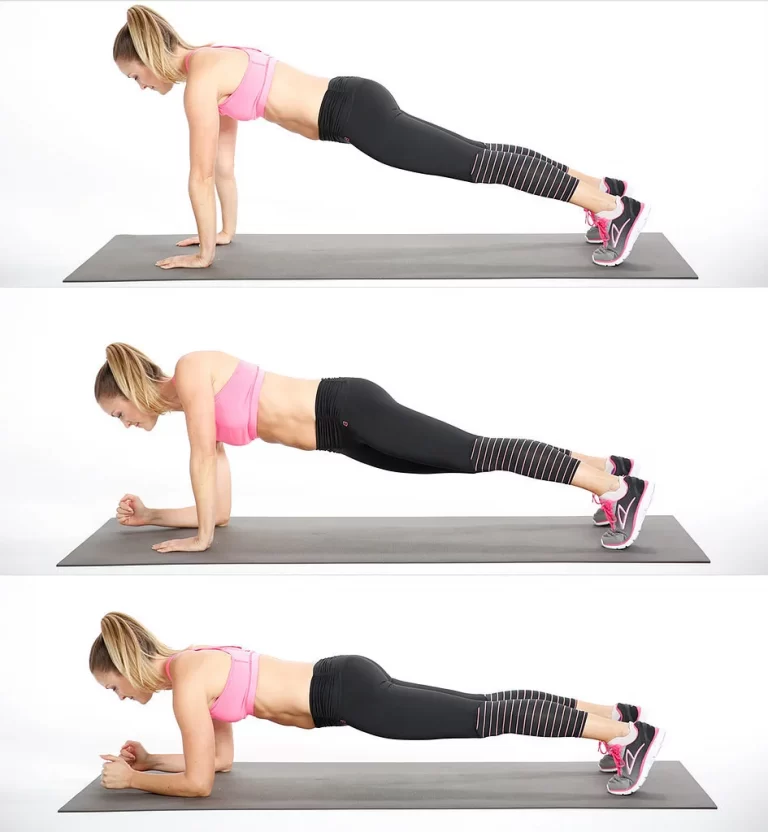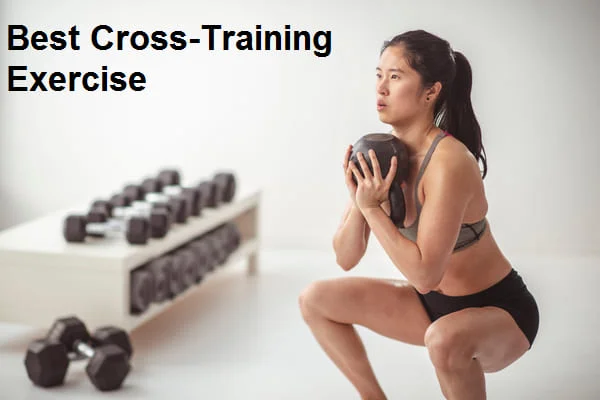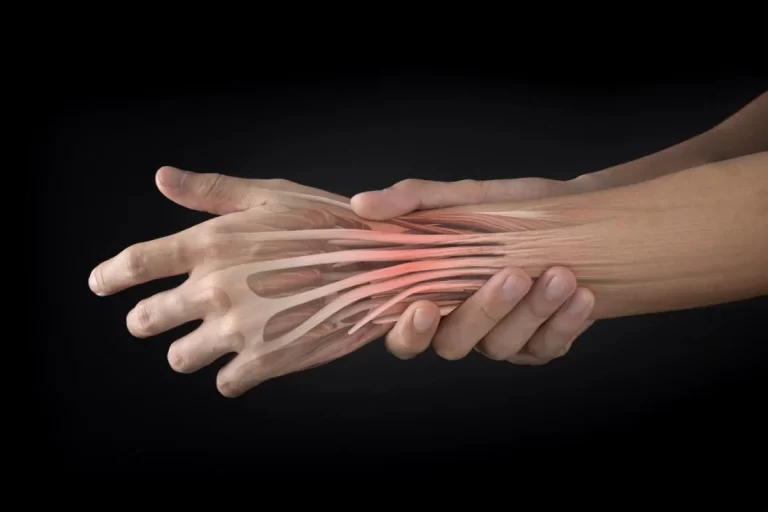Teres major stretching: Health benefits, How to do?
Teres major stretching is an important exercise to improve flexibility at the back side of the shoulder region and also helps to prevent injury and improve your overall fitness level.
What is the teres major stretching?
The teres major muscle attaches to the front of the upper arm, crosses under the shoulder and attaches to the lower, the inner portion of the scapula in the upper back. Teres major facilitates shoulder extension, adduction, and internal rotation ranges of motion.
Stretches for the teres major involve moving towards the opposite ranges of motion — shoulder flexion, abduction, flexion and external rotation.
What are the benefits of teres major stretching?
There are some benefits you need to know are :
- It stabilizes the shoulder joint.
- It extends, adduct and internally rotate the shoulder joint.
- Increase your performance in physical activities
- Lower your risk of injuries
- Increase range of motion (ROM)
- Improve muscle blood flow
- Enable muscles to work most effectively
- Increase your ability to perform daily activities
What are the types of the teres major stretching?
There are some types you may perform:
- Teres major stretch
- External Rotation Stretch
- Overhead Shoulder Flexion
- Side Bends
- Overhead Reach
- Standing Hands Clasped Over Head
- Crossbody Stretch
- Triceps Stretch
- Shoulder Adductor Stretch
Teres major stretch
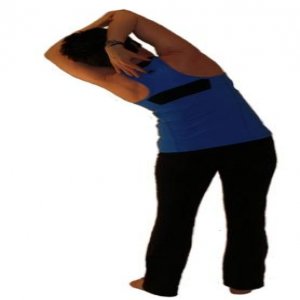
How to: You can perform this stretch standing or seated. Raise the right arm up overhead.
Then bend the right elbow so that the palm of the right-hand reaches down the back aiming between the scapulae.
Place the left hand on the right elbow.
From this position, you can gently assist the right elbow towards the left.
Maintain your chest lifted and try not to let your head drop forward. Also, aim the scapulae towards the tail to keep them firm on the back.
If you are very tight in the teres muscles you may feel a stretch with this slight motion.
To deepen the stretch you may start to lean to the left with the upper body.
Maintain the pelvis level and the scapulae firm on the back. Try not to collapse on the left side.
Stay here for 5-8 seconds then switch to the left side.
External Rotation Stretch
How to: Take a lying position on a flat bench with your right upper arm extended at your side, far from your shoulder.
Your elbow bends up to 90 degrees, so the forearm points away from your feet.
Have assistance secure your elbow with one hand and push your wrist down with the use of another hand.
When you feel a gentle stretch, hold this position for 15 to 30 seconds, then perform it on your left arm.
Overhead Shoulder Flexion
How to: Take a standing position in a door frame.
Reach your both arms overhead, placing your palms shoulder-width apart on the wall just upward to the frame.
Lean forward slightly, moving your head and upper body in front of your hands.
When you feel a mild stretch, hold for 10 seconds. Perform it 2-3 times.
Side Bends
How to: Stand tall and spread your feet wider than the shoulders.
Rotate your right foot outward 90 degrees, pointing the toes sideways.
Extend your left arm above your head, then lean to the right, placing your right hand on your knee.
Stop when you feel tension through the left side of your upper body, then hold for 20-30 seconds.
Repeat the stretch in the other direction.
Maintain your chest and thighs directed forward as you do the exercise.
Overhead Reach
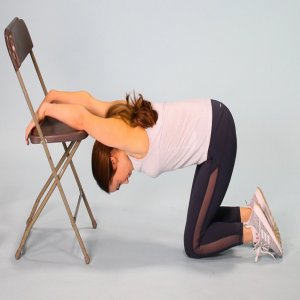
How to: Kneel 4 to 5 feet away from the chair.
Slowly bend forward at the waist level and put your hands on the seat of a chair, around shoulder-width apart.
Drop your head downward, between the arms, until you feel a mild stretch.
Hold for 5-10 seconds, pressing down with your hands with every inhalation, then releasing the pressure and lowering.
Your upper body farther with each exhalation.
Standing Hands Clasped Over Head
How to: Stand straight with your feet should be hip-width apart. Clasp the hands together and put them over your head with hands facing the roof. Drop your pelvis, tail bone straight down toward the ground.
Your Chest and shoulders are open.
Feel the ends of your feet like a tripod. Feel the balls of the heels, big toes, and little toes on the ground.
Breathe and stretch your elbows straight upward and reach your palms toward the roof.
Improve the intensity of the stretch by bending the side.
You can cross your hands at waist level to feel more stretched.
Cross body Stretch

How to: While standing, bring your right arm directly across your chest.
Your right hand is past your left shoulder.
Keep your left elbow tight to the chest and lift your forearm.
Your right elbow is supported with your left arm.
Use the left forearm to press your right elbow towards the chest.
Hold this stretch for 25-30 seconds and then switch arms.
Triceps Stretch

The title of this stretch is for the triceps but the positioning of your arm also stretch the Teres Major.
How to: Keeping your torso straight, lift your right arm straight up into the air.
Next, flex at the elbow so that your hand is flat against the spine.
Take the left hand and slowly pull the bent elbow back and towards your head to feel the deep stretch.
Hold this position for 25-30 seconds and then do it on the left arm.
Shoulder Adductor Stretch
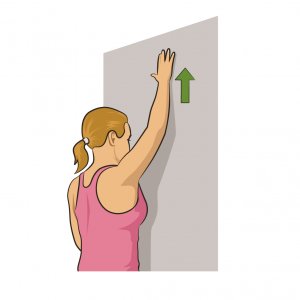
How to: Stand beside the wall.
Place the hand of the arm nearest to the wall flat against it.
Move your fingers straight up the wall as high as you can without feeling any pain.
Re-flatten the palm against the wall and lean your weight against your palm.
You should feel a stretch throughout the arm and down at the same side of your body.
Hold this position for 25 -30 seconds and repeat on the opposite side.
What are the safety and precautions for Teres major stretching?
There are some things you need to remember during stretching:
- Don’t bounce. Stretch in a smooth motion, without bouncing. Bouncing during stretch can cause injury to the muscle and actually cause muscle tightness.
- Hold the stretch. Breathing should be normal and hold every stretch for around 30 seconds; in problem areas, you may need to hold for about 60 seconds.
- Don’t aim for pain. You have to feel tension while you are stretching, not pain. If you feel pain, you have pushed so far.
- Return to the point where you don’t feel any pain, then hold it.
- Keep up with the stretching. You can achieve the most advantage by stretching daily, around 2-3 times a week.
- Skipping daily stretching means that you risk lowering the potential advantages. For instance, if stretching helps you increase range of motion, your range of motion may decline again if you stop stretching.
- Bring motion into your stretching. Gentle motions, such as Pilates or yoga, can help you be more flexible in specific motions.
- If you have a chronic condition or an injury, you need to adjust the stretching techniques. Consult your physical therapist for this matter.
- Do warm-up prior to stretching.
- Performing stretching before and after exercise gives you benefits.
- Stretch slowly and gently.
- Breathing is normal during stretching.

